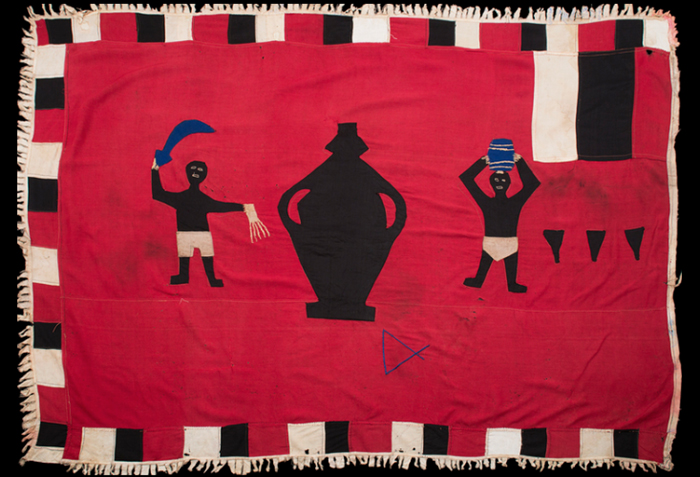
Asafo flag, Fante people, Ghana, post-1957
It is hard to imagine an older form of graphic design than the flag. Certainly illuminated manuscripts would be close, but flags have been so integral to humankind that the number of variations in history is seemingly endless. The process rests on how one divides a rectangle or square with colors, shapes, and symbols—while building meaning into what is there: a practice familar to designers.
International flags, national flags, flags of states and cities, organizational flags, battle flags, religious flags, fraternal flags, flags of ships—the list goes on and on. Flags mark territory, define cultures, nations, boundaries, and represent ethnic groups. When a flag is adopted by a nation, it comes to represent what that nation is or hopes to be. The past, present, and future are manifested in flags.
But I have found a group of flags that seems to throw all that out the window.
The flags shown here are from the African Asafo military, and most date from just before Ghana’s independence in 1957, or shortly thereafter. Asafo is a Fante military organization that is thought to go back to the late fifteenth century. These military organizations were divided into groups and played an important role in the local and national political process. A Fante town may have from two to fourteen companies, each with its own name, number, regalia, and shrine. All of these companies were led by a senior commander, with captains of subdivisions and various other officials—including linguists, flag bearers, priests, and priestesses.
Though many of these African Asafo flags use a small version of the British Union Jack in reference to their colonial past, the literal approach exhibited in the rest of the design is more akin to storytelling than the kind of abstract symbolism found in most Western flags. This particular visual approach is found in the folk and self-taught art in many countries, where simplicity in characters mixed with words is more common. Like African American quilts, these flags follow few so-called design rules, which tend to make these flags highly collectible.
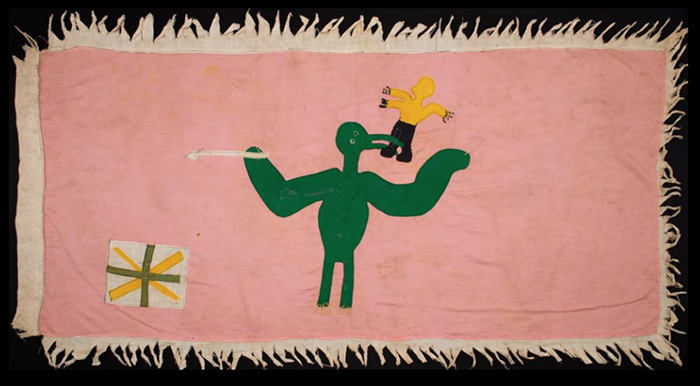
Asafo flag, Fante people, Ghana, post-1957
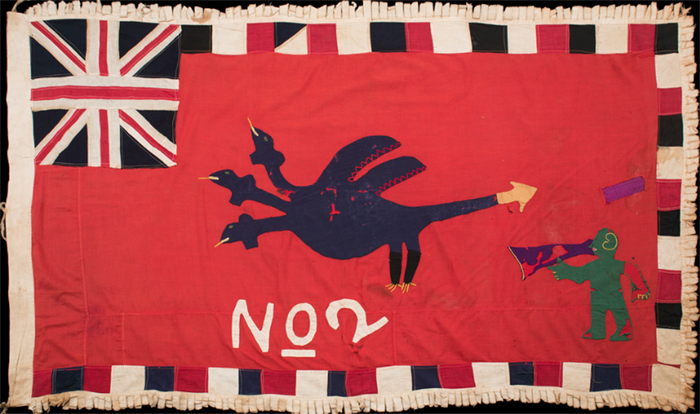
Asafo flag, Fante people, Ghana, pre-1957
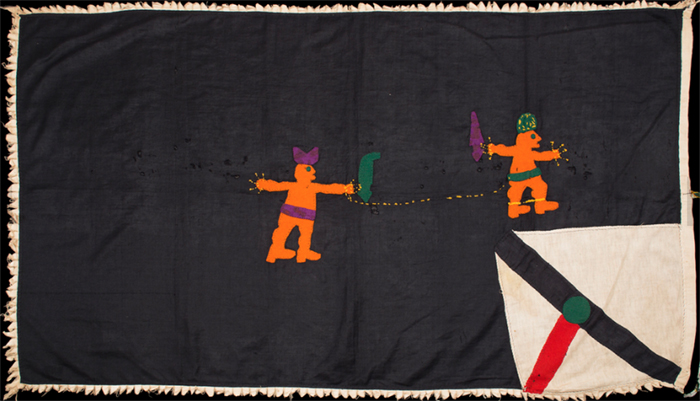 Asafo flag, Fante people, Ghana, post-1957
Asafo flag, Fante people, Ghana, post-1957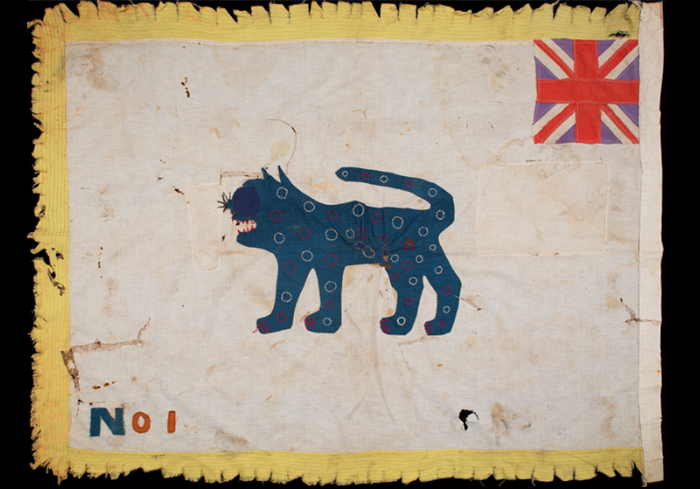
Asafo flag, Fante people, Ghana, pre-1957
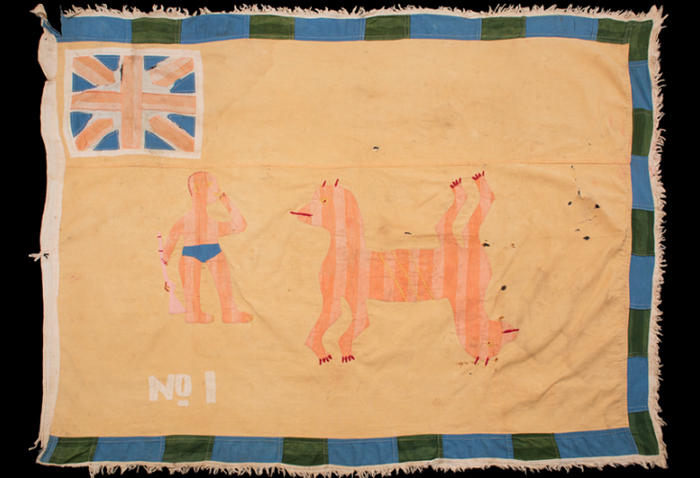
Asafo flag, Fante people, Ghana, pre-1957
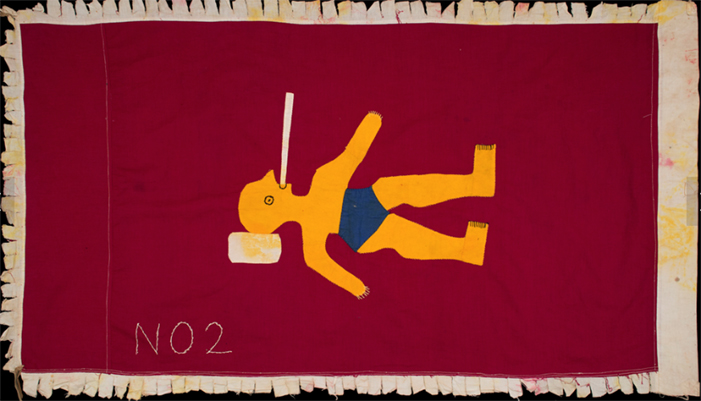
Asafo flag, Fante people, Ghana, post-1957
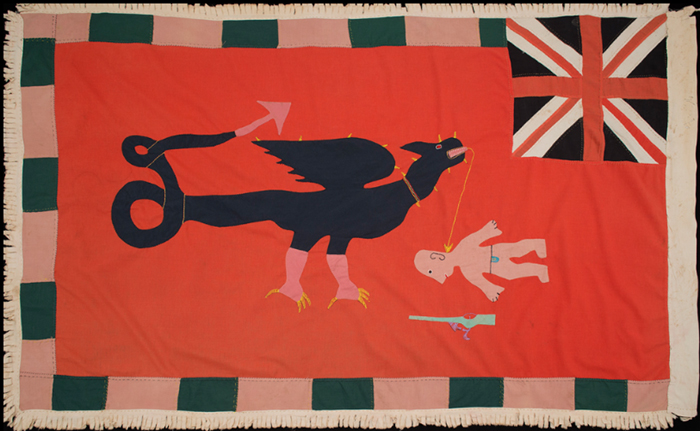
Asafo flag, Fante people, Ghana, pre-1957
Flags 1–8 courtesy of Cavin-Morris Gallery, New York
